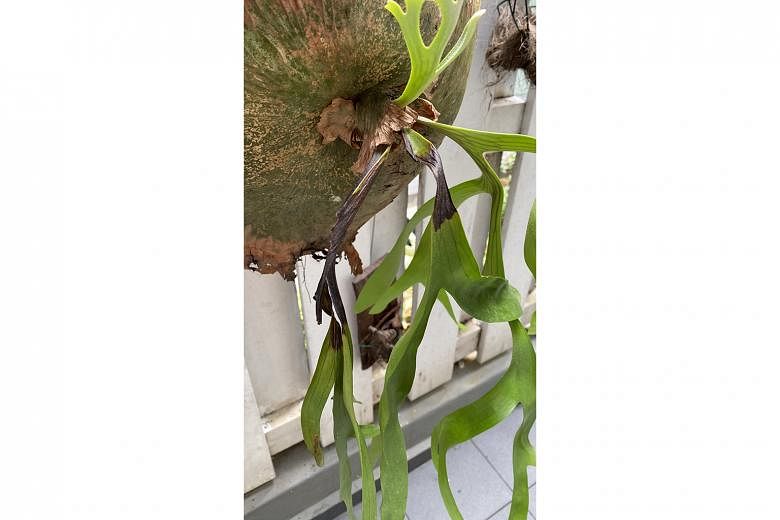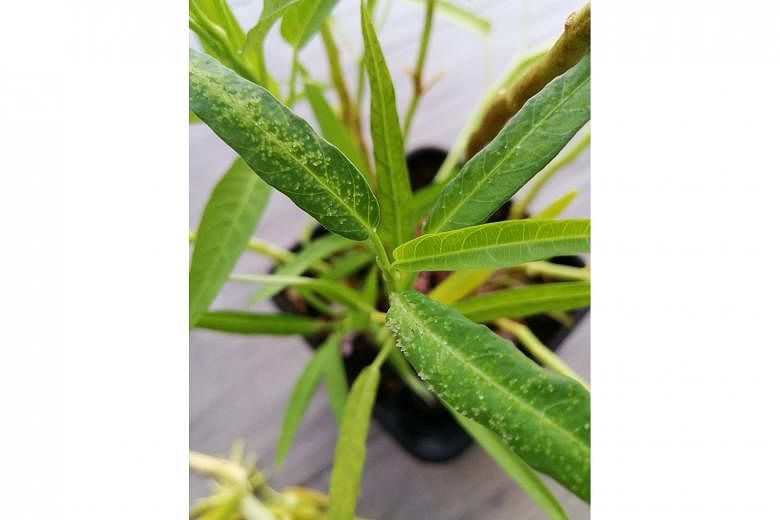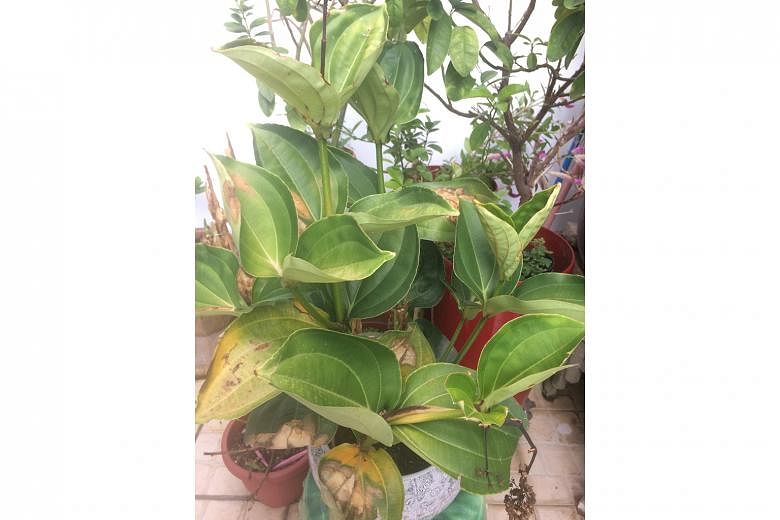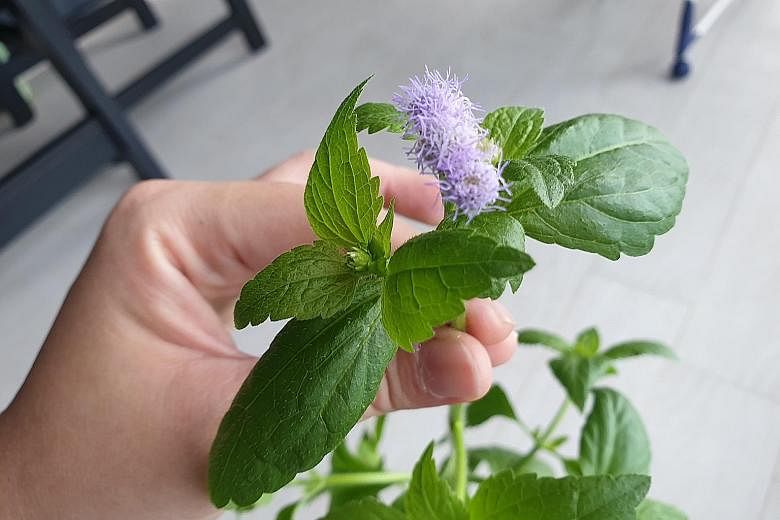Rotate among pesticides, control ant population to deal with mealy bugs
I like to keep succulent plants. I notice that ants are attracted to sap produced by white mealy bugs on the echeveria, a type of succulent. I use a diluted malathion solution to get rid of the mealy bugs. What else can I do to prevent such an infestation?
Yang Cheong Shun
Mealy bugs can be difficult to control on succulents. As there are many areas which mealy bugs can hide on the plant and some plant species are sensitive to oil-based pesticides, a multi-prong approach is hence recommended.
First, inspect your plants regularly and remove mealy bugs by hand or a strong jet of water.
Control the population of ants as they can help mealy bugs to spread.
You can try to rotate among pesticides to minimise the risk of pesticide resistance. You can make a diluted castile soap solution, which acts as an insecticidal soap that suffocates mealy bugs.
However, do check for phytotoxicity first before spraying on the entire plant.
Staghorn fern may have a fungal disease
Over a few months, I noticed that some antler fronds of my staghorn fern have turned black. Also, it looks like the shield fronds have a green substance growing on them. Are the issues due to too much watering? How can I save the plant? I had it for a few years and it was producing beautiful fronds until a few months ago.
Chee Kim Low
Your staghorn fern is likely suffering from a fungal disease, which is common in this group of plants.
For now, you may want to reduce watering, but do not allow the plant to dry out totally. Apply a fungicide such as Mancozeb to treat the disease.
Depending on the species, give the plant adequate sunlight. The lack of sunlight can lead to weak plants and an overly moist growing environment which make the plant susceptible to disease.
Bumps on leaves due to growing conditions
Are these salt-like crystals on my kangkong calcium oxylate crystals? Why do some kangkong have them and some do not? What should I do to prevent these unsightly crystals from re-occurring on my kangkong?
Teo Chia Hsia
As shown in the picture, the bumps appear on both sides of the leaves.
It is a physiological issue called intumescence. It is not a disease. These are abnormal outgrowths from the leaf tissue due to an imbalance in water relations within a plant brought about by a faster water-uptake rate than what can be transpired through the leaf tissue.
These unsightly outgrowths are often observed on plants growing in an enclosed environment.
The bumps show up when susceptible species are grown under LED grow lights where ultraviolet light is deficient.
This issue can be avoided by growing plants under LED lights with suitable spectra, which can provide ample blue or ultraviolet wavelengths of light.
Some trial-and-error is required by hobbyists to find the most suitable LED grow lights for particular species.
If the plant is growing under natural light outdoors, it is recommended to use a well-drained growing media and increase light exposure by spacing out the plants.
Do not over-water the plants during extended periods of cloudy weather, when light levels are low.
Increasing air circulation around the plants may help with the situation.
Medinilla plant grows best under filtered sunlight
I bought this plant, which had thick waxy leaves and blossoms of small pink flowers, during Chinese New Year. It grew very well in direct sunlight for two months. However, of late, the leaves have yellow patches and the flowers have dried up. What should I do?
Goh Choo Beng
The plant appears to be Medinilla magnifica, which is known by common names such as Rose Grape, Pink Lantern plant and Chandelier tree.
The leaves appear bleached, which is a result of sunburn.
In general, this plant grows best under filtered sunlight and in a humid environment. For it to thrive, you may want to grow it in a location that provides the right level of light and in a moist but well-drained and porous growing media.
Damaged portions of the plant will not recover. New leaves that are produced will gradually replace them.
Billygoat Weed not recommended for eating
This plant started growing in my pot of orchids. I transferred it into its own container. Now, it has grown very big and tall. It does not look like a weed and its leaves smell like lemon. What plant is it and are its parts edible?
Lim Pey Ting
The plant appears to be a weed called Ageratum conyzoides. Its common names include White Weed and Billygoat Weed.
The plant occurs here as a weed, where it readily disperses its seeds and grows in garden beds and flower pots.
It is not recommended that you eat the plant.
• Answers by Dr Wilson Wong, an NParks-certified practising horticulturist, parks manager and ISA-certified arborist. He is the founder of Green Culture Singapore and an adjunct assistant professor (Food Science & Technology) at the National University of Singapore.
• Have a gardening query? E-mail it with clear, high-resolution pictures of at least 1MB, if any, and your full name to stlife@sph.com.sg. We reserve the right to edit and reject questions.




